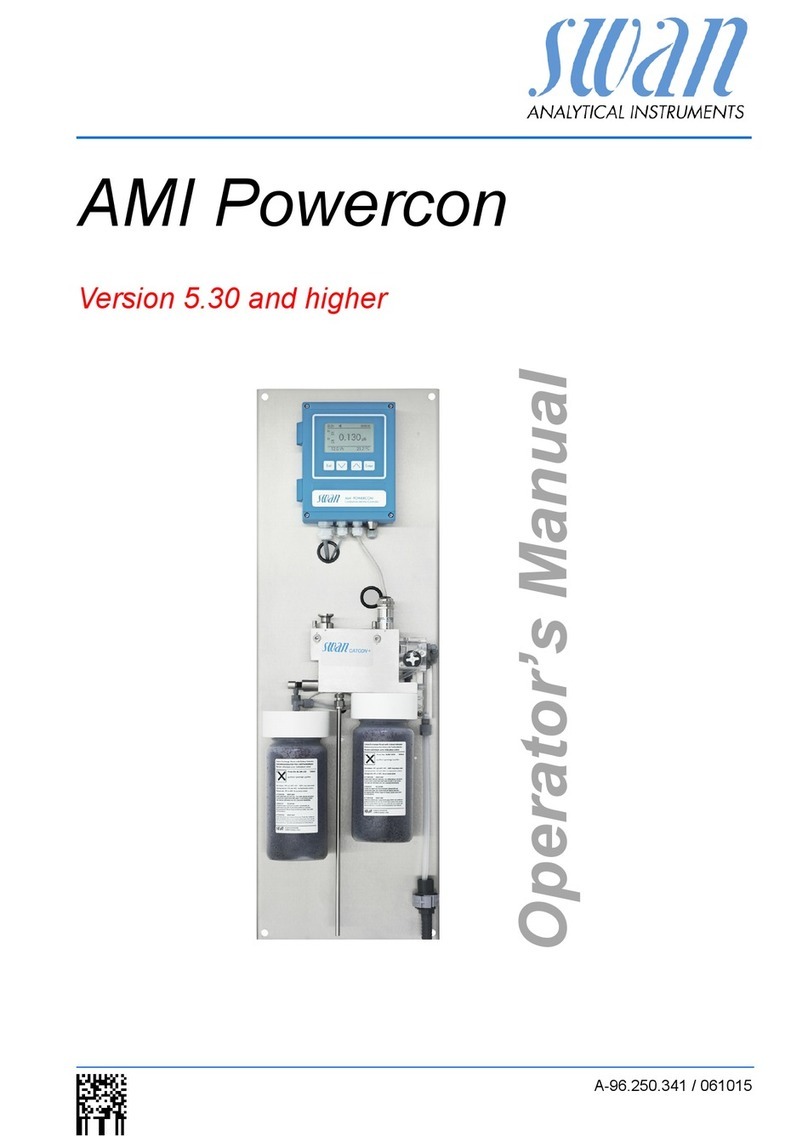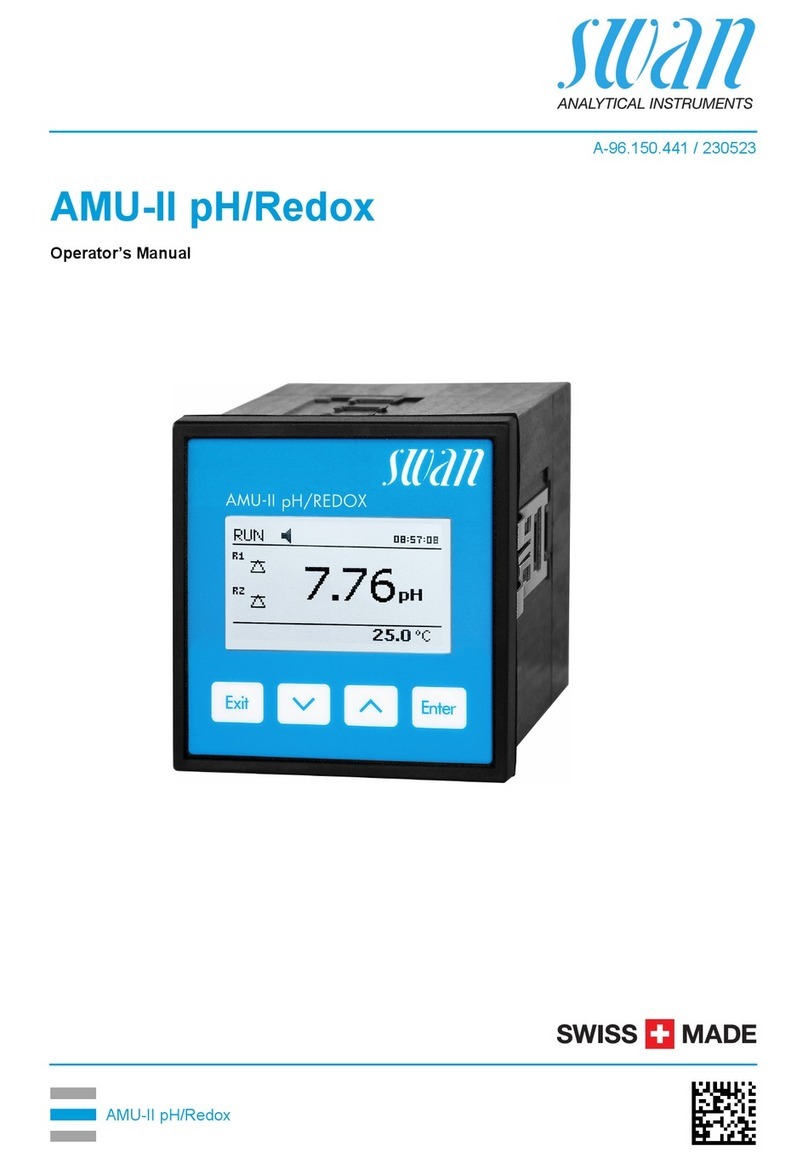
AMU Powercon
A-96.250.331 / 230320 1
Table of Contents
1. Product Description. . . . . . . . . . . . . . . . . . . . . . . . . . . . 3
1.1. Description of the System . . . . . . . . . . . . . . . . . . . . . . . . 3
1.2. Single Components . . . . . . . . . . . . . . . . . . . . . . . . . . . . . 6
1.2.1 AMU Powercon Transmitter . . . . . . . . . . . . . . . . . . . . . 6
1.2.2 Swansensor UP-Con1000 . . . . . . . . . . . . . . . . . . . . . . 8
1.2.3 Flow Cells . . . . . . . . . . . . . . . . . . . . . . . . . . . . . . . . . . 9
2. Installation . . . . . . . . . . . . . . . . . . . . . . . . . . . . . . . . . . . 10
2.1. Installation Checklist . . . . . . . . . . . . . . . . . . . . . . . . . . . . 10
2.2. Dimensions of the AMU Transmitter . . . . . . . . . . . . . . . . 11
2.3. Install the Flow Cell . . . . . . . . . . . . . . . . . . . . . . . . . . . . . 12
2.4. Connecting Sample Inlet and Outlet . . . . . . . . . . . . . . . . 14
2.4.1 Swagelok Fitting Stainless Steel at Sample Inlet. . . . . 14
2.4.2 FEP Tube at Sample Outlet . . . . . . . . . . . . . . . . . . . . . 15
2.5. Install the Conductivity Sensor. . . . . . . . . . . . . . . . . . . . . 15
2.6. Installation of Cation Exchanger . . . . . . . . . . . . . . . . . . . 16
2.7. Electrical Connections . . . . . . . . . . . . . . . . . . . . . . . . . . . 17
2.8. Power supply . . . . . . . . . . . . . . . . . . . . . . . . . . . . . . . . . . 19
2.9. Sensor . . . . . . . . . . . . . . . . . . . . . . . . . . . . . . . . . . . . . . . 19
2.10. Flow Meter . . . . . . . . . . . . . . . . . . . . . . . . . . . . . . . . . . . . 19
2.11. Input . . . . . . . . . . . . . . . . . . . . . . . . . . . . . . . . . . . . . . . . . 19
2.12. Relay Contacts. . . . . . . . . . . . . . . . . . . . . . . . . . . . . . . . . 20
2.12.1 Alarm Relay . . . . . . . . . . . . . . . . . . . . . . . . . . . . . . . . . 20
2.12.2 Relay 1 and 2. . . . . . . . . . . . . . . . . . . . . . . . . . . . . . . . 20
2.13. Signal Output 1 and 2 (current outputs). . . . . . . . . . . . . . 20
2.14. Interfaces . . . . . . . . . . . . . . . . . . . . . . . . . . . . . . . . . . . . . 21
2.14.1 RS232 Interface . . . . . . . . . . . . . . . . . . . . . . . . . . . . . . 21
2.14.2 Profibus (optional) . . . . . . . . . . . . . . . . . . . . . . . . . . . . 21
2.14.3 Modbus (optional) . . . . . . . . . . . . . . . . . . . . . . . . . . . . 22
3. Instrument Setup . . . . . . . . . . . . . . . . . . . . . . . . . . . . . . 23
3.1. Establish sample flow . . . . . . . . . . . . . . . . . . . . . . . . . . . 23
3.2. Programming . . . . . . . . . . . . . . . . . . . . . . . . . . . . . . . . . . 23
4. Operation . . . . . . . . . . . . . . . . . . . . . . . . . . . . . . . . . . . . 25
4.1. Keys . . . . . . . . . . . . . . . . . . . . . . . . . . . . . . . . . . . . . . . . . 25
4.2. Display . . . . . . . . . . . . . . . . . . . . . . . . . . . . . . . . . . . . . . . 26
4.3. Software Structure . . . . . . . . . . . . . . . . . . . . . . . . . . . . . . 27
4.4. Changing Parameters and values . . . . . . . . . . . . . . . . . . 28






























